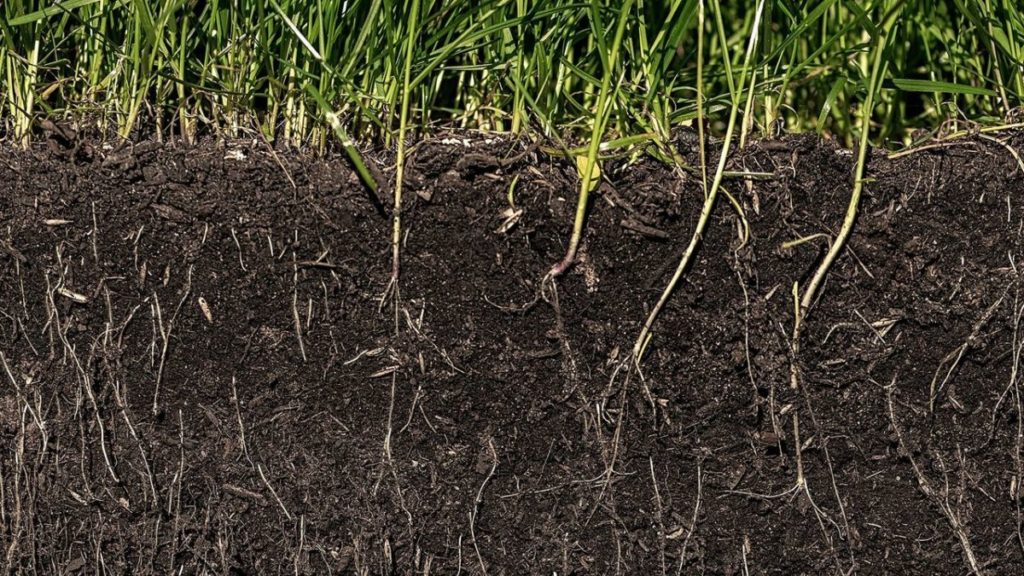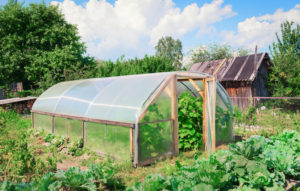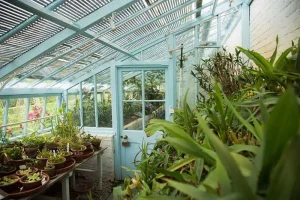Soil biology is a fascinating and complex world that lies beneath our feet.
The teeming microbial ecosystem below ground plays a important role in maintaining soil health, supporting plant growth, and regulating Earth’s climate.
Soil biologists study the diverse array of microorganisms that call this underground environment home, and their research is shedding light on how these tiny organisms interact with one another, their human counterparts, and our planet as a whole.
From understanding how fungi communicate with each other to deciphering the intricate networks of nutrient cycling and carbon sequestration, the science of soil biology is revealing a hidden world of possibility and promise for addressing some of our greatest environmental challenges.
By delving into this mysterious realm, we can learn how to better care for the living skin of our planet and ensure a sustainable future for generations to come.
Soil is a living ecosystem
Soil is not just a medium for plant growth, but a living ecosystem that is teeming with microorganisms. There are more than 10,000 different species of microorganisms in a handful of soil, including bacteria, fungi, protists, and viruses.
It’s not just a medium for plant growth, but a dynamic and complex community of microorganisms.
A handful of soil can contain over 10,000 different species of microorganisms, including bacteria, fungi, protists, and viruses.
These microorganisms play a important role in decomposing organic matter, fixing nitrogen, and creating nutrients that plants need to grow.
They also contribute to the development of soil structure and fertility, and can even influence the taste and nutritional quality of the crops that grow in the soil.
In addition to their ecological importance, these microorganisms can also have practical applications for humans.
For example, certain species of soil bacteria can produce antibiotics and other medicinal compounds, while fungi in soil can be used to produce antibodies and other bioproducts.
Soil microorganisms can also play a role in bioremediation, helping to clean up pollutants and contaminants in the environment.
Furthermore, soil microorganisms are highly sensitive to changes in their environment, making them useful indicators of soil health and environmental quality.
By monitoring the diversity and abundance of microorganisms in soil, farmers and researchers can detect changes in soil fertility, water quality, and other factors that affect ecosystem health.
This information can be used to make more informed decisions about soil management, crop selection, and other agricultural practices.
Overall, soil is a living ecosystem that is teeming with life and potential.
By recognizing and respecting the diversity and complexity of soil microorganisms, we can use this knowledge to improve soil fertility, environmental quality, and human health.]]
Soil is a Living Ecosystem: Unlocking the Potential of Soil Microorganisms
Soil is often viewed as a simple medium for plant growth, but it is, in fact, a complex and dynamic living ecosystem that is teeming with microorganisms.
Soil is home to a wide variety of bacteria, fungi, and other microorganisms that play a vital role in ecosystem health and productivity.
These microorganisms are not just passive components of soil, but active participants in the soil ecosystem, contributing to soil fertility, water quality, and environmental health.
One of the most significant contributions of soil microorganisms is their ability to produce antibiotics and other medicinal compounds.
Certain species of soil bacteria can produce antibiotics that are effective against a wide range of plant pathogens, making them valuable candidates for biopesticide development.
Soil fungi are a source of novel antibiotics and other bioactive compounds that could be used to combat human diseases.
Furthermore, soil microorganisms play a critical role in nutrient cycling and the breakdown of organic matter.
Bacteria and fungi are responsible for the decomposition of plant residues, allowing nutrients to be released back into the soil for plant uptake.
This process not only enhances soil fertility but also plays a critical role in carbon sequestration, as soil microorganisms help to capture and store carbon in the soil.
Soil microorganisms also play a role in environmental quality.
Soil bacteria can break down pollutants such as polycyclic aromatic hydrocarbons (PAHs) and heavy metals, reducing the risk of these pollutants entering groundwater and surface water.
In addition, soil fungi can degrade the mycotoxins produced by plant pathogens, reducing the risk of these toxins entering the food chain.
Soil is not just a passive medium for plant growth, but an active ecosystem that is teeming with microorganisms that play a critical role in plant health, nutrient cycling, carbon sequestration, and environmental quality.
Therefore, it is important to manage soil resources in a way that promotes soil health and biodiversity, rather than degrading soil through unsustainable farming practices.>Soil is a living ecosystem, teeming with a diverse array of microorganisms that play a critical role in maintaining plant health, nutrient cycling, carbon sequestration, and environmental quality.
The multitude of microorganisms present in soil includes bacteria, fungi, protozoa, nematodes, and arthropods, among others.
These microorganisms perform a variety of functions essential to plant growth and health, such as fixing nitrogen, solubilizing minerals, and breaking down organic matter.
For example, soil fungi can degrade mycotoxins produced by plant pathogens, reducing the risk of these toxins entering the food chain.
In addition, soil bacteria can fix nitrogen and solubilize minerals, allowing plants to absorb the nutrients they need to grow.
Moreover, soil microorganisms play a important role in carbon sequestration, as they help to store and cycle carbon in the soil.
Soil organic matter, which is primarily composed of decaying plant and animal tissue, contains a significant amount of carbon.
When soil microorganisms break down this organic matter, they release carbon dioxide into the atmosphere, contributing to climate change.
However, when soil microorganisms are allowed to flourish and accumulate organic matter in the soil, they can sequester carbon in the soil for thousands of years, effectively storing it away from the atmosphere and helping to mitigate the effects of climate change.
Furthermore, soil microorganisms have a profound impact on soil structure and fertility.
For example, certain fungi can form symbiotic relationships with plant roots, helping to improve soil structure and increase plant growth.
Soil bacteria can also contribute to soil fertility by fixing nitrogen and other essential nutrients, allowing plants to grow and thrive.
Soil is not just a medium for plant growth, but a living ecosystem that is essential for maintaining the health and fertility of the soil, as well as mitigating the effects of climate change.
Soil is a thriving ecosystem teeming with life, containing billions of microorganisms such as bacteria, fungi, and protozoa.
These microorganisms are essential for soil fertility and plant growth, as they contribute to the breakdown and recycling of organic matter, improve soil structure, and fix essential nutrients like nitrogen.
Certain fungi form symbiotic relationships with plant roots, enhancing soil structure and plant growth.
Soil microorganisms are also important for carbon sequestration, as they can store carbon in the soil for thousands of years, mitigating the effects of climate change.
By managing soil microorganisms, we can enhance soil health, increase crop yields, and contribute to a more sustainable future.
Microorganisms are essential for plant growth
Microorganisms in the soil play a important role in plant growth and development. They help to decompose organic matter, release nutrients, and solubilize minerals, making them available to plants.
Microorganisms are important for plant growth and development, as they play a vital role in decomposing organic matter, releasing nutrients, and solubilizing minerals.
These microorganisms, which include bacteria, fungi, and other microorganisms, break down plant residues and organic matter, converting them into nutrients that are available to plants.
For example, certain bacteria can solubilize phosphates, making them available to plants even if they are locked up in insoluble forms.
Mycorrhizal fungi form symbiotic relationships with plant roots, increasing the surface area of the root system and improving nutrient uptake.
Without these microorganisms, plants would be unable to access the nutrients they need to grow and thrive.
By adding organic matter to the soil and creating a healthy, diverse ecosystem, gardeners can encourage the growth of these beneficial microorganisms, leading to healthier and more productive plants.
Microbial diversity is important for ecosystem health
A diverse community of microorganisms in the soil is essential for ecosystem health. Different species of microorganisms have different functions and roles, and a diverse community helps to ensure that all of these functions are represented.
Microbial diversity is critical for maintaining ecosystem health, and a thriving community of microorganisms in the soil is essential for the well-being of the entire ecosystem.
Different species of microorganisms play distinct roles and perform unique functions, making a diverse community essential for ensuring that all of these functions are represented.
For instance, certain microorganisms are responsible for breaking down organic matter and recycling nutrients, while others contribute to the decomposition of plant material and the cycling of elements like nitrogen and phosphorus.
Microbial diversity can enhance soil structure and fertility, promote plant growth and health, and even help to mitigate the effects of pests and diseases.
By maintaining a diverse community of microorganisms in the soil, ecosystems can function optimally and ensure the continued health and productivity of the land.
Soil biota can impact climate change
Microorganisms in the soil can impact climate change by storing carbon, producing greenhouse gases, and influencing the formation of soil structure. For example, certain types of soil bacteria can store large amounts of carbon in their biomass and in the soil.
Soil biota plays a important role in regulating climate change through a variety of mechanisms.
One of the most significant impacts of soil biota is carbon sequestration, where microorganisms in the soil store carbon in their biomass and in the soil itself.
For instance, certain types of soil bacteria, such as Rhizobia, can store up to 20% of their body weight in carbohydrates, which are eventually converted into soil organic matter and stored for centuries.
Soil fungi, such as mycorrhizal fungi, can store up to 60% of their body weight in carbohydrates, which further contributes to soil carbon sequestration.
Moreover, soil biota can also influence the formation of soil structure, which can impact greenhouse gas emissions.
For example, certain types of soil microorganisms can produce gases such as nitrous oxide and methane, which are potent greenhouse gases that contribute to climate change.
On the other hand, other microorganisms can produce carbon dioxide, which is a less potent greenhouse gas but still contributes to climate change.
Soil structure can impact the availability of nutrients and water for plants, which can influence their growth and productivity, ultimately affecting the carbon cycle and greenhouse gas emissions.
Overall, soil biota plays a vital role in regulating climate change through carbon sequestration, greenhouse gas emissions, and soil structure formation.
Understanding the impact of soil biota on climate change is important for developing effective strategies to mitigate its effects and ensure a sustainable future for our planet.]
Soil biota, the diverse array of microorganisms living in the soil, plays a important role in regulating climate change.
These tiny organisms have a significant impact on the carbon cycle, greenhouse gas emissions, and the formation of soil structure.
One of the primary ways soil biota influences climate change is through carbon sequestration.
Soil microorganisms can store carbon in the form of organic matter, preventing it from entering the atmosphere as carbon dioxide, a potent greenhouse gas.
This carbon sequestration process can be enhanced through sustainable land management practices, such as reducing tillage, incorporating cover crops, and increasing organic amendments.
In addition to carbon sequestration, soil biota can also influence the formation of soil structure.
Certain microorganisms can produce gases such as nitrous oxide and methane, which are potent greenhouse gases that contribute to climate change.
Soil structure can also affect the rate of carbon sequestration and greenhouse gas emissions, as it influences the availability of carbon and nutrients to microorganisms.
Furthermore, soil biota can impact the formation of soil structure through their activities.
For example, certain fungi and bacteria can produce extracellular polysaccharides, which can improve soil aggregation and increase soil organic matter.
Soil biota can also influence soil moisture and temperature, which can affect the activity of microorganisms and their ability to sequester carbon.
Soil biota plays a significant role in regulating climate change by storing carbon, producing greenhouse gases, and influencing the formation of soil structure.
By enhancing soil biota through sustainable land management practices, we can promote a sustainable future for our planet.]]
Soil biota can influence human health
The microorganisms in soil can also influence human health. For example, certain types of soil bacteria can produce antibiotics and other compounds that have potential health benefits. the microorganisms in soil can influence the growth and development of crops, which can have a cascading effect on human health.
The diverse community of microorganisms in soil can not only maintain soil fertility and structure, but also have a profound influence on human health.
Certain types of soil bacteria, such as Streptomyces, can produce antibiotics and other compounds with potential health benefits.
For instance, the antibiotic actinomycin D, which is produced by Streptomyces coelicolor, has been shown to have antimicrobial and anticancer properties.
The microorganisms in soil can influence the growth and development of crops, which can have a cascading effect on human health.
For example, certain soil bacteria can enhance the uptake of nutrients by plants, leading to more nutritious and healthier crops.
Moreover, the mycorrhizal fungi in soil can form symbiotic relationships with plant roots, improving plant growth and increasing the overall nutritional value of crops.
Furthermore, soil microorganisms can also produce phytoalexins, which are compounds that help plants defend against pathogens and pests, and have been found to have potential health benefits for humans.
Overall, the soil biota play a important role in maintaining soil fertility and structure, and their influence on human health is multifaceted and far-reaching.
Soil biota can help clean pollutants
The microorganisms in soil can help to clean pollutants from the environment. For example, certain types of soil bacteria can break down polycyclic aromatic hydrocarbons (PAHs), which are common pollutants in soil.
Soil biota, including bacteria and fungi, play a important role in cleaning pollutants from the environment.
One common pollutant found in soil is polycyclic aromatic hydrocarbons (PAHs), which are harmful to human health and the environment.
However, certain types of soil bacteria, such as Rhodococcus rhodochrous and Rhodobacter sphaeroides, have been found to break down PAHs, rendering them harmless.
These bacteria have specialized enzymes that can degrade PAHs into less toxic compounds, such as carbon dioxide, water, and biomass.
For example, Rhodococcus rhodochrous can degrade up to 14 different PAHs, including the carcinogenic compound benzo(a)pyrene.
By utilizing these soil microorganisms, we can effectively clean pollutants like PAHs from contaminated soil, thus minimizing their potential harm to human health and the environment.
Soil biota can be used to bioremediation
Bioremediation is the use of microorganisms to clean up pollutants in the environment. Soil biota can be used to bioremediate a wide range of pollutants, including PAHs, heavy metals, and pesticides.
Soil biota, including bacteria, fungi, and other microorganisms, play a important role in bioremediation, the process of using microorganisms to clean up pollutants in the environment.
Soil biota can be employed to bioremediate a wide range of pollutants, including polycyclic aromatic hydrocarbons (PAHs), heavy metals, and pesticides.
For instance, bacteria such as Rhodococcus and Pseudomonas have been shown to degrade PAHs, breaking them down into less harmful compounds.
Similarly, fungi such as Aspergillus and Fusarium have been found to be effective in degrading heavy metals, transforming them into less toxic forms.
Certain soil microorganisms have been shown to break down pesticides, such as organochlorines, into less toxic compounds.
By harnessing the power of soil biota, bioremediation offers a sustainable and cost-effective approach to clean up pollutants in the environment, enhancing the health and productivity of ecosystems.
Soil biota can be used to produce biofuels
The microorganisms in soil can be used to produce biofuels, such as ethanol and butanol. For example, certain types of soil bacteria can convert agricultural waste into these biofuels.
Soil biota offers a vast potential for the production of biofuels, with microorganisms in the soil capable of converting agricultural waste into valuable fuels such as ethanol and butanol.
For instance, certain species of soil bacteria can ferment agricultural residues like crop stubble, farm waste, or even food waste, producing biofuels that can be used to power vehicles, provide heat, and generate electricity.
This innovative technology has the potential to revolutionize the way we produce energy, reducing our reliance on fossil fuels and mitigating the impact of climate change.
By harnessing the power of soil biota, we can create a more sustainable future for ourselves and future generations.
The use of biofuels produced from soil biota can also help reduce greenhouse gas emissions, as they are carbon-neutral and produce significantly less pollution than traditional fossil fuels.
Want More? Dive Deeper Here!
Hey there! If you’re the type who loves going down the rabbit hole of information (like we do), you’re in the right spot. We’ve pulled together some cool reads and resources that dive a bit deeper into the stuff we chat about on our site. Whether you’re just killing time or super into the topic, these picks might just be what you’re looking for. Happy reading!






